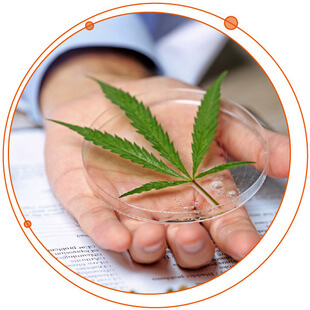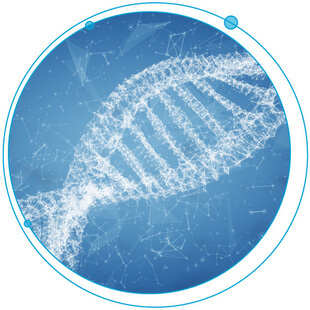Thailand has become the first southeast Asian country to legalize cannabis for medical use. Cannabis was originally introduced into Thailand from India, and until it was outlawed in the 1930s, it was historically used as a kitchen condiment, medicine and source of fiber.
Tags
PFAS testing: 2024 in review and what to expect for 2025
For as long as PFAS persist in the environment, there is no doubt they will persist in our conversations as environmental scientists. Globally, PFAS contamination has been detected in water supplies, soil and even in the blood of people and wildlife. Different countries are at various stages of addressing PFAS contamination and many governments have set regulatory limits and are working on assessing the extent of contamination, cleaning up affected sites and researching safer alternatives.

Inside the box: Acoustic ejection mass spectrometry for drug discovery
On average, it takes 10-15 years and 1-2 billion dollars to approve a new pharmaceutical for clinical use. Since approximately 90% of new drug candidates fail in clinical development, the ability to make early, informed and accurate decisions on the safety and efficacy of new hits and leads is key to increasing the chances of success.

Unveiling the power of ZT Scan DIA: Insights from Ludwig Sinn’s presentation at World HUPO Congress 2024
In a recent presentation at the World HUPO Congress 2024, Ludwig Sinn from the Ralser lab shared exciting advancements in proteomics research, focusing on the innovative ZT Scan DIA acquisition modes developed in collaboration with SCIEX. Let us explore the key highlights and benefits of this innovative technology.

Exploring the power of ZT Scan DIA
In a recent presentation, Tim Heymann from Mann Lab at the Max Planck Institute of Biochemistry shared his first impressions of ZT Scan DIA, the novel data-independent acquisition strategy from SCIEX, highlighting its innovative approach and significant benefits for proteomics research. Let’s dive into the key points from his insightful talk.

Inside the box: Complementary fragmentation with LC-MS for Metabolite Identification
Liquid chromatography-mass spectrometry is commonly used for Met ID but confident soft spot identification is not always possible. Imagine the advantage of unambiguous metabolite identification using liquid chromatography-mass spectrometry (LC-MS) reducing the need for additional safety testing during drug discovery. Quickly and easily generate the information you need using routine assays that are robust and efficient, enabling confident decision-making while also saving time and money.

Tips and tricks from our application experts: AAV analysis with CE
Peter Holper, Staff Applications Scientist at SCIEX, US, shares his tips and tricks on AAV analysis using CE with the BioPhase 8800 system and the PA 800 Plus system.
Pharma perspectives: The influence of LC-MS innovation on drug development outsourcing
It is no secret that (bio)pharmaceutical research and development is complex, both scientific and regulatory processes. Working for a contract research organization and more recently for SCIEX has provided an interesting perspective on trends the market experiences that affect many of us.
6 Signs it’s time for a new vendor
A lab’s success depends on many factors from instrument quality to efficient operations, including being partnered with the right vendor. A vendor is more than just a supplier. They should provide you with a high-level quality of support in maximizing the lifespan and performance of your systems, reducing downtime, enhancing ROI and more. How do you know if you’re partnered with the right one? Here are six signs it might be time to find someone new.

Nitrosamines: Where are we now?
Nitrosamines are a large group of N-nitroso compounds that share a common functional N-N=O group. They are produced by a chemical reaction between a nitrosating agent and a secondary or tertiary amine. Back in 2018, nitrosamines suddenly found themselves in the spotlight when they were unexpectedly detected in medications for high blood pressure. Since then, they have been found in several other prescription medications, including those for heartburn, acid reflux and diabetes, resulting in manufacturers recalling some common medications.

Celebrating customer experience: Insights from SCIEX leaders
Introduction Customer Experience Day (CX Day) is a special occasion for SCIEX, celebrated every first Tuesday in October. It’s a day dedicated to recognizing the incredible value of our customers and the relentless dedication of our associates who strive to make...

Detect the Signal, Not the Noise
Improving the specificity and selectivity of your assay Your LC-MS assay is only as good as its power to discern your target compound from everything else. Standards dissolved in clean solvents can make beautiful assays, but analytes in real-world samples can behave...

“There’s Nothing Wrong with a Little Bit of Mold.” WRONG!
Has anyone ever said to you, “There’s nothing wrong with a bit of mold”? No one likes to waste food, and it’s not unusual for people to scrape or pick mold off of foods before eating! Believe it or not, there’s guidance on foods that are (and are not) safe to eat if...

Top 4 reasons to try a SCIEX software subscription
Are you avoiding a software upgrade because of the cost? Just subscribe, sit back, and relax. The majority of SCIEX software solutions are now available as subscription products. For a price that is only 40% of the perpetual license fee, you can get access to more...

Improving Patient Care Through Translational Mass Spectrometry
Featuring: Wake Forest® Baptist Health Steven Wong, Ph.D., DABCC (TC), FACB, Past President AACC, Professor of Pathology, serves as Director of the Clinical Chemistry and Toxicology Core Laboratory and is Co-director of the Clinical and Translational Mass Spectrometry...

Software Licensing Comparison: Subscription or Perpetual?
Are you confused by software licensing? Do you want to know the difference between a subscription and a perpetual license? In this blog, we compare both options and explain the value of each choice for your laboratory. Years ago, the perpetual license model was the...
Make the Leap from GC to LC-MS/MS
Choosing the best technique for your analysis can be tough. Should you go with gas chromatography/mass spectrometry (GC-MS) or liquid chromatography/tandem mass spectrometry (LC-MS/MS)? That’s the key question. That’s why we’re here to help. The Limitations of...

Why Mass Spectrometry for Your Clinical Lab?
Aaron Hudson, VP/GM, Clinical Diagnostics, SCIEX Aaron Hudson is Vice President and General Manager, Clinical Diagnostics at SCIEX. Aaron has been with SCIEX for over 17 years, beginning as a Sales Representative, and holding various roles including Director Global...

Bad Leftovers: Antibiotic Residues in Food
We know that antibiotics used to treat livestock can end up in the food we eat. Routine food testing labs are essential for detecting compounds, like these, that can be dangerous to our health. Antibiotic residues include both parent molecules and metabolites left...

Canada’s Focus on Cannabis Quality and Safety Intensifies
The Second in a Three-Part Series Welcome to the second in a series of blogs from the cannabis team at SCIEX, designed to bring you up to speed and put you in the lead of the recently legalized cannabis market in Canada. In the first blog, we introduced the Cannabis...

Looking for Ethanol Metabolites and Barbiturates in Urine? Get the Fast and Sensitive ‘Two Bird, One Stone’ Method
Alcohol is legal and widely available, but it is an intoxicating and addictive substance that can have harmful effects on the human mind and body. It reduces inhibitions and distorts judgment and rational decision making, making it the number one cause of criminal...

Sensitivity, It’s at the Very Heart of Who We Are
Walk into any modern pharmaceutical company these days, and you’ll likely find at least one if not many, SCIEX LC-MS/MS instruments. Assays for the detection and quantitation of small molecule drugs, metabolites, biotherapeutics, biomarkers, and many other analytes...

The Advantages of a Software Maintenance Agreement
You’ve bought your mass spectrometer. You’ve installed all your hardware. You’ve got your operating software set up. You’ve mastered your software workflow modules to optimize quantitative and qualitative data processing. That’s it, right? Even though your system is...

You’ve Edited the Gene. Now What?
Protein-Level Verification Without The Need For Antibodies Using SWATH® Acquisition. Fast, Comprehensive, and Highly Reproducible Although humans have been able to influence the traits of plants and animals for thousands of years through domestication and selective...

Environmental Scientists: Here’s Why You Should Consider Nominal Mass Spectrometry for Your Routine PFAS and Gen-X Testing in Drinking Water
How are you feeling about PFAS regulation right now? If you’re like us, you probably find it hard to pinpoint one specific feeling. But if we took a look at the current state of affairs, we’d all probably agree that it’s a minefield of uncertainty. Under the Safe...

Why Quant?
Every decision you make requires a number As a pharmaceutical scientist, you understand the challenges in getting a new drug through the discovery and development pipeline. As an innovation partner in mass spectrometry, SCIEX works continuously with you, our...

6 Tips to Keep Your Lab’s Software Up and Running
6 Tips to Keep Your Lab’s Software Up and Running Is your lab utilizing SCIEX instrumentation but hesitant about upgrading to the latest software release? Perhaps you are uncertain about key features, error codes, or output. Not to worry, behind every great mass...

A Smart Way to Profit from the Wealth of Biobanks
Microflow LC with SWATH® Acquisition for Digitizing Biobanks What if you could access thousands of high-quality samples for your research? What if these samples were well-annotated biological specimens? And what if they were carefully segmented into just the...

Why Conventional Flow LC-MS/MS Bioanalysis Is out and Microflow Is In
New technologies can transform a laboratory’s throughput and efficiency. At Alturas, if we try out a new technology, we ask: Does it work? Is it convenient? Is it rugged? Are we getting good results? When we look at the convenience, uptime, and overall data that we’re...

Food Testing Labs: What Technology Is Right for You?
Consumer safety is the driving force behind food analysis. From field (or ocean) to fork, there are numerous opportunities for food to become potentially hazardous to human health. As fast as new contaminants enter the food chain, changes in regulation and legislation...

Fueling Up: Eating To Stay Strong When You Have Cancer
This is the third and final post in our series in honor of International Women’s Day and our collaboration with World Cancer Research Fund. To wrap up, Deborah Howland talks about the importance of diet for anyone facing cancer – or trying to prevent it. A specialist...